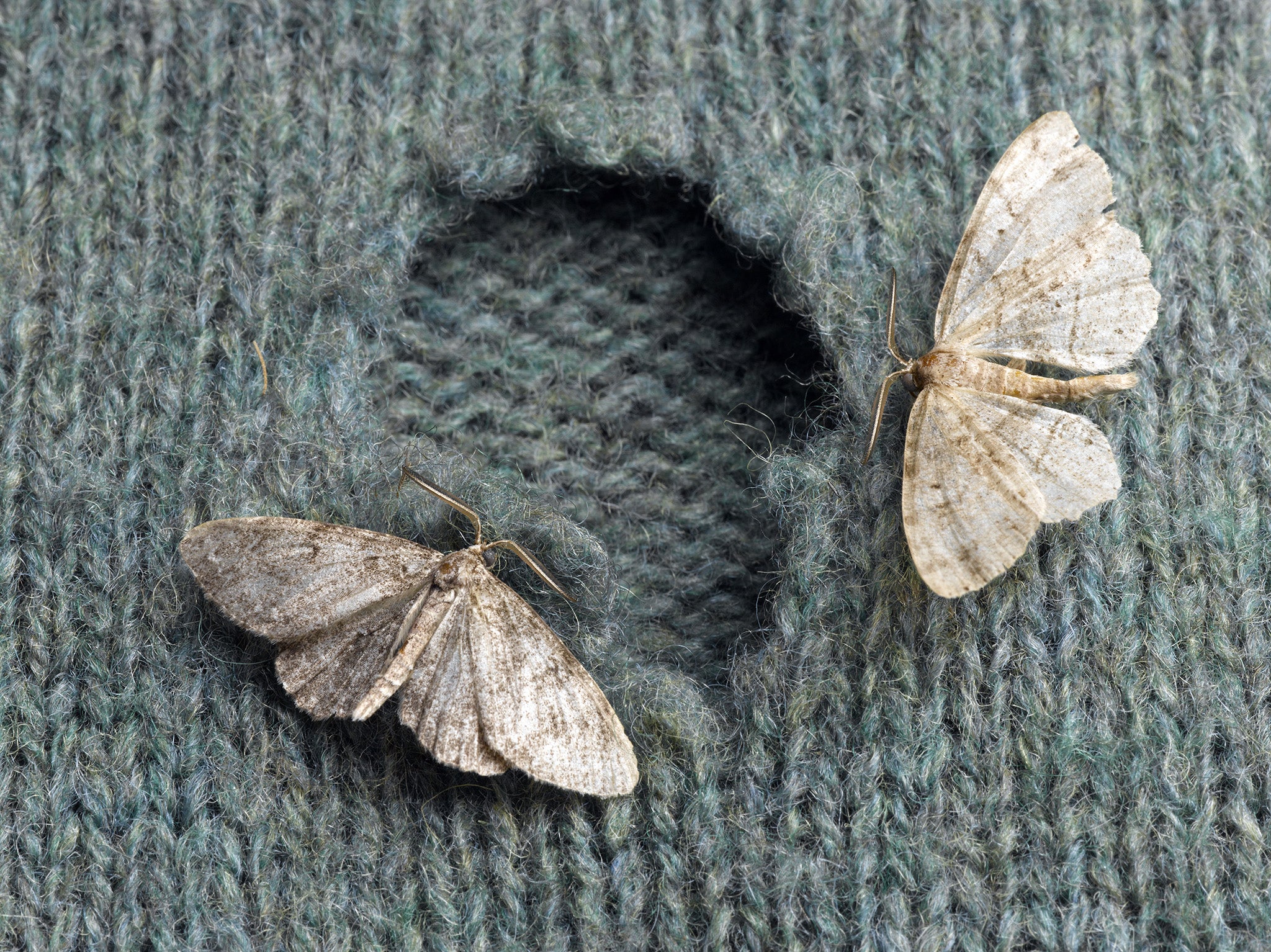Making moths sexually confused could save our woolly jumpers
Covering male moths in female scent should distract others from mating with real females

Scientists believe they have discovered a way to keep moths away from woollen clothes – make them sexually confused.
Pest experts have found a way to replicate the sex pheromone produced when female moths are ready to mate.
By combining this ‘sex perfume’ with electrostatically charged particles, the scent can become stuck to male moths, which confuses them and prevents mating.
“Male moths fly towards the particle, which is on a small device which looks like a piece of chalk. Parts of the chemical stick to the moth, meaning the male moths instead smell like female moths,” one expert, David Cross, told BBC Radio 5 Live.
“When the male moth flies around smelling like a female moth, the other moths will come out of their home – or harbourage – and chase that fake female around.
“When they try to mate with that one then the electrostatically charged particles get stuck to that particular moth as well.”
The result, said Mr Cross, was “a lot of confused moths”.
By tricking the males into trying to mate with other males, the female moths do not produce the fertilised eggs which hatch the destructive larvae that eat our sweaters.
“There should be no unintended consequences, clothes moths are in a closed environment, and the pheromone is very specific to that species,” said Mr Cross.
According to California University’s state-wide integrated pest management program, female clothes moths lay between 40-50 eggs over a two-week period, which they attach to fabric threads, and they die once this process is complete.
Males, on the other hand, continue to reproduce for the remainder of their lives.
Join our commenting forum
Join thought-provoking conversations, follow other Independent readers and see their replies
Comments
Bookmark popover
Removed from bookmarks